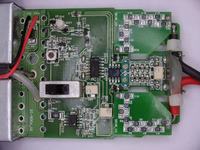max0412
Full Member level 5
high impedance signal
I’m using a photo mosfet driver; to turn on a high side mosfet (M1).The driver is a Dual Photovoltaic LH1262CAC from Vishay. I can fully enhance a 16nC FET in about 700uS (13Vgs). The problem is I want to pulse the input to the driver and be able to monitor the Mosfet gate simultaneously. This way I can minimize current consumption. The second channel drives a small mosfet (M2) and is used for discharging the gate of M1 for fast turn-off (10 – 15 Us).The way I have it set up is that M1 gate capacitance can only discharge through M2 other then the leakage of M2 an nts4001 N-Fet which is negligible. See graph below.
NTS4001 LEAKAGE VERSUS TEMP and VDS

I’m considering the AD8221 INAMP. Anyone have any suggestion on how to measure the output of the driver without loading it. I don’t have a $1000 FET differential probe obviously, or I wouldn’t be asking. The best I have is a 100x passive probe even this discharges the gate.
LH1262CAC datasheet
AD8221 datasheet
Nts4001 datasheet
High side load switch FCD5N60 M1
I’m using a photo mosfet driver; to turn on a high side mosfet (M1).The driver is a Dual Photovoltaic LH1262CAC from Vishay. I can fully enhance a 16nC FET in about 700uS (13Vgs). The problem is I want to pulse the input to the driver and be able to monitor the Mosfet gate simultaneously. This way I can minimize current consumption. The second channel drives a small mosfet (M2) and is used for discharging the gate of M1 for fast turn-off (10 – 15 Us).The way I have it set up is that M1 gate capacitance can only discharge through M2 other then the leakage of M2 an nts4001 N-Fet which is negligible. See graph below.
NTS4001 LEAKAGE VERSUS TEMP and VDS

I’m considering the AD8221 INAMP. Anyone have any suggestion on how to measure the output of the driver without loading it. I don’t have a $1000 FET differential probe obviously, or I wouldn’t be asking. The best I have is a 100x passive probe even this discharges the gate.
LH1262CAC datasheet
Code:
http://www.vishay.com/docs/83802/83802.pdfAD8221 datasheet
Code:
http://www.analog.com/UploadedFiles/Data_Sheets/597695969332879224376031AD8221_a.pdfNts4001 datasheet
Code:
http://www.onsemi.com/pub/Collateral/NTS4001N-D.PDFHigh side load switch FCD5N60 M1
Code:
http://www.fairchildsemi.com/ds/FC%2FFCD5N60.pdf
